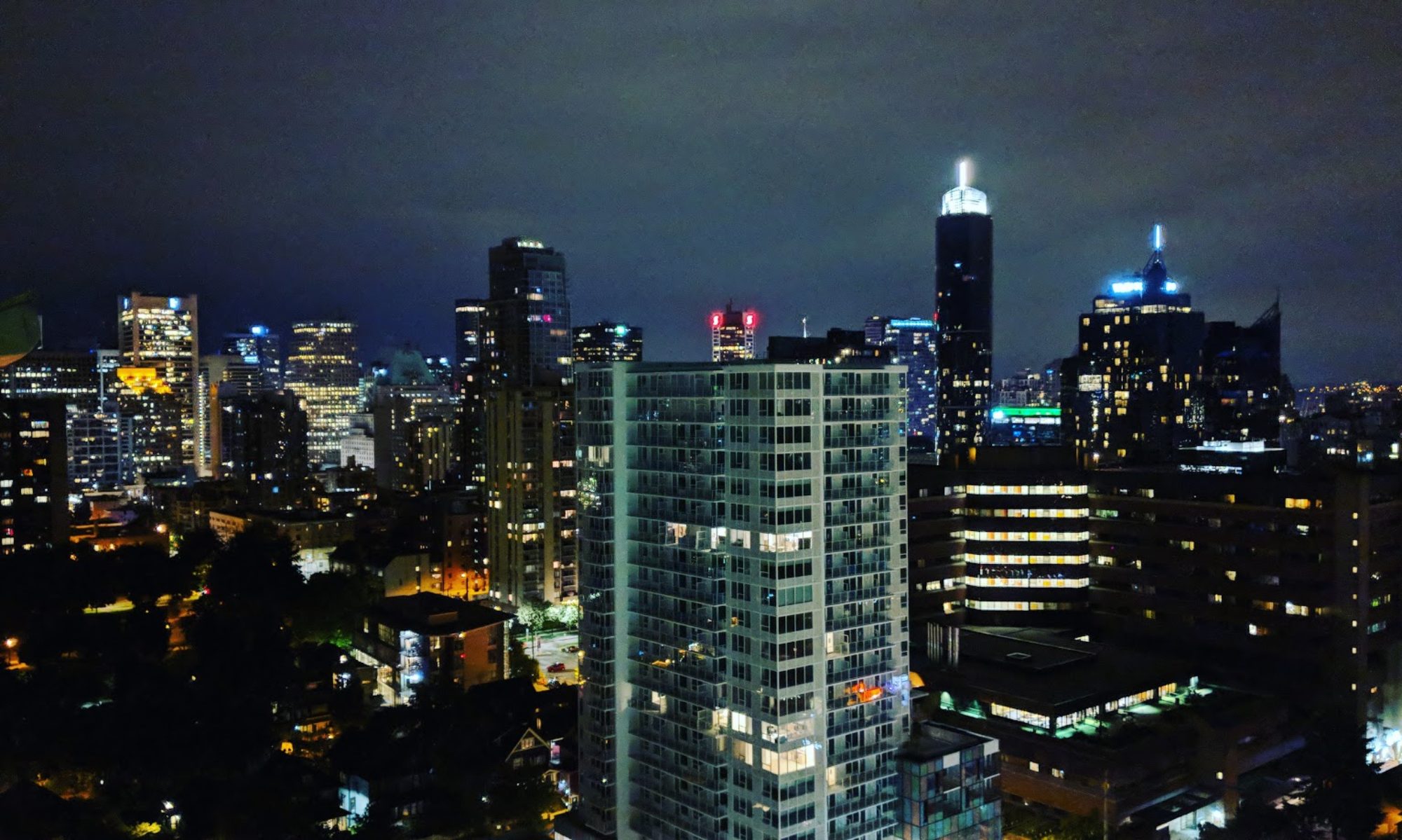Written Summer, 2017
I spent the night at the elaborately named Shin-Hakdoate Hokuto Station last night. Actually, and luckily, I spent the night at the station hotel, which has a different name on Google Maps than it does on the front of the building, usually denoting a relatively recent change of ownership, management, and in this case it looked like a pretty recent refurbishment as well. It was a nice night’s sleep after having been on trains and walking all day, and I slept pretty soundly.
When I woke up this morning I got my first good look at the surroundings of Shin Hakodate Hokuto Station. From my room’s window I could see: the parking lot, the car-rental agency next door, more-or-less empty fields until a small mountain in the distance. It was a gleaming new station building and hotel dropped into the middle of a farmer’s field.
I had gotten to the hotel at around midnight the previous evening, the train car emptying out over a hundred passengers into the quiet, largely closed, immaculate new terminal station. It was cooler there than it had been in Sendai, and darker too. Dark with no stars. It had been overcast all day, taking the edge off of the hot and humid Japan summer, but was now robbing us of the brilliant starfields that we might otherwise receive hundreds of miles north of Tokyo’s light pollution. Still, a cool breeze, the first I’d felt since arriving in Japan this August, was a welcome reminder that I’d arrived in northern Hokkaido.
I wisely booked my room at the station hotel ahead of time, knowing I’d probably end up stuck in Shin-Hakodate Hokuto for the evening, instead of being able to make it to my eventual destination in the large city of Sapporo. I checked in without a fuss, my room was ready for me even at midnight. Thanks, Japan. Thanks, Expedia. The folks next to me in line seemingly did not book ahead, and ended up squeezing 4 people + luggage into the same sort of twin beds room I had. They didn’t seem thrilled at the prospect. That’s what you get for traveling during the holidays.
Obon is basically the summer holidays, where the whole country is more-or-less expected to take their vacation during the first two weeks of August, to visit their hometowns, the places that they’re from, to pay respect to their ancestors and still-living relatives who never left for the big city. I hesitate to generalize about Japan, I’ve had an incredible diversity of experience here and met so many truly unique people, but I will say that about the only thing that would be an effective excuse to the boss for the average worker to actually take the holidays from work that they’re supposed to IS to leave town and pay respects to your ancestors. On this trip it’s clear that more and more folks, especially young-ish families, are escaping work under the cover of Obon to actually travel WITH their families, to see sights, to enjoy themselves. Unless everyone’s ancestors are interred at Japan’s famous historical sights and-oh-by-the-way-there-are-beaches-nearby.
I received a phone call from the front desk exactly 15 minutes after 11am, politely informing me that checkout was at 11. “Sumimasen. Wakarimasu. Chotto matte. Go-bu. Domo arigatto.” I guess I really did need the rest. Pro-tip: If you’re like me and hate mornings, shower before getting into bed. I threw on some clothes, repacked my suitcase, and 5 minutes later entered the hallway confronted by a squad of cleaning ladies. The doors of every other room open, all of them huddled patiently near my door waiting for me to emerge so that they could also open my door. An asynchronous chorus of Ohayo Gozaimasu! greeted me. Don’t be late checking out in Japan.
My first impression of the station building was correct. It was brand new, it was gleaming, and it was a massive creation standing tall amongst not much else. The Shin-Hakodate Hokuto station isn’t really in Hakodate, or Hokuto, or anywhere. Maybe on a map with generous borders.
The entire station building is glass-fronted, as is the style now, despite Sapporo’s cold winters and the propensity for glass-fronted 4 story open-air buildings to be nearly impossible to cool once the weather gets warm. Beautiful wood timbers hang from the ceiling, maybe acting as sound baffling, but certainly adding warmth to the otherwise outsized and boxy interior. Despite being closed last night at midnight, it still SEEMED closed at 11:30am on a Monday. Looking at the train schedule you could see the building only got about a train every 15 minutes, most of those local trains too. The Shinkansen back to Tokyo only ran every two hours. Same for the train onward to Sapporo. Even getting a ride into Hakodate could mean a 20 minute wait. I guess by North American standards this doesn’t seem so bad, but standing in this giant, state-of-the-art facility designed to accommodate thousands, especially having come north from Tokyo, the lack of passengers waiting for trains, and the lack of trains running on a Monday morning was unsettling.
I was hungry, and the “Kiosk” branded mini-combini in the station wasn’t cutting it. This enormous building and all it had to offer were 10 kinds of train bentos and a drink fridge smaller than the one in my store back in Toronto? I pulled up YELP to see if I was missing a breakfast option, since hotel breakfast ended well before checkout (as did access to the on-site onsen—they REALLY don’t want you hanging around). YELP told me that there was a highly-rated Starbucks 9 miles away in Hakodate that I might enjoy, and literally nothing else nearby, except for another Starbucks that was 10 miles away, also in Hakodate, but with a lower review score.
One neat trick of being a foreigner travelling in Japan is that you can get a JR pass, good for all local trains and most of the high speed Shinkansen routes. It will also let you into the shinkansen-area of the station, which usually requires a separate (expensive) ticket. So, while I only needed to catch a local ‘express’ train to Sapporo, I still walked right through those Shinkansen gates unmolested like some sort of transit god where, lo and behold, there was a much larger “Kiosk” branded convenience store. It had sandwiches, and delicious local chu-hai options, and so breakfast became brunch as I had a Japanese spin on Bacon & Eggs with with Egg Salad and Pork Cutlet sandwiches. My delicious Cantaloupe Chu-Hai making a top-notch mimosa replacement.
As predicted the station building was stuffy. It was only 72 degrees outside, but definitely warmer (and humid) in the waiting area where I enjoyed my feast. Glass-fronted buildings. I exited the Shinkansen area again and headed down to my train platform 30 minutes early in the hopes of getting to experience the cool breeze I’d felt last night. On arriving at the train platform to Sapporo, I discovered that it’s outdoors and unenclosed, only a roof to keep offer a little shade or protection from the rain. It was clearly a remnant from an earlier version of the station. It was nice, there, in the breeze, and offered me a new view of the surrounding area. I could see houses about a mile away, a little town nestled at the base of another mountain. According to the map this town is Nanae, maybe even where I was standing them was technically Nanae, or at least, it was.
The Shinkaksen only recently started running up to Shin-Hakodate Hokuto station. In fact the station is only about 18 months old, existing on the site of the former Oshima-Ono Station (we hardly knew ye), and before the war was called Hongo Station (we never knew ye). Before the Shinkansen came here, for years, you could only take it as far north as Shin-Aomori on the main island of Honshu. All the way at the northern tip. At Shin-Aomori you’d have to switch to a special train that went under the water in a tunnel to Hokuto, then once in Hokuto switch again to the Hokuto Express to Sapporo. The new extension of the Shinkansen to Shin Hakodate Hokuto shaves something like 2 hours off of the trip North, it’s incredible, and particularly welcome for foreigners like me, intent on seeing as much of the country as possible without getting on an airplane. But it means that you’re not really in Hokuto anymore, and Hakodate, a city suffering its own issues around recession and depopulation, is now a specific side-trip out of the way, and Sapporo is much better-known to foreigners visiting the country, and much more exciting a destination for Japanese tourists exploring the region.
The trip north from Tokyo by train is a little treacherous (though not at all dangerous) for folks visiting Japan for the first time, folks without a great command of the language. Once the trains stop running, they stop running, and wherever you happen to be is where you’re spending the night. It wasn’t by accident that I knew to book my station hotel ahead of time, let me tell ya. The first time Andrew and I were traveling to Sapporo a decade ago we got stuck in Shin-Aomori, the last train north having been missed, the overnight sleeper-car train being completely full. Wearily and with no language we trudged up from the station to the first hotel (terrible!), booked a room having no Japanese language ability, raided the combini for a beer and a snack, and got to sleep so we could get all of our transport sorted the next morning. That’s the only time I’ve been to Aomori really, just for a night, just for one hotel booking and a thousand yen at the combini. But now, I don’t know that I’ll ever actually go to Aomori, let alone Shin-Aomori. I certainly haven’t been back since, though I’ve passed few it a few times, and that’s all it will be for most people—a place to pass through.
Hokuto and Hakodate though, now that the train has been rerouted up to the gleaming new station? Well now no one has to pass through there at all.
– Christopher

